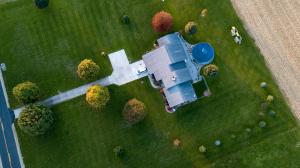- 19 reads

Building a new home is a privilege in the modern world but also a huge responsibility. Namely, you have the opportunity to construct your dream home and mustn’t leave anything out. For instance, many people get carried away with floor plans that they completely forget to implement energy-efficient building codes. In this sense, energy-efficiency is not that hard to implement in a residential structure and comes with the promise of lower utility bills and a higher market value of the property.
Harvesting the power of the sun
Solar power is on the rise globally. Harvesting the power of the sun has become a great way not only to use less power in residential structures but to actually produce a surplus of power. Installing solar panels on the roof of your new home will ensure you always have enough cheap energy. Moreover, if the conditions in your region are right, you can even export power, i.e. sell it to the local power company.
The biggest downside of solar power is the present batteries which are capacious. This means that you can store energy for the average time of 24 hours. If there are several cloudy days one after the other, the mini solar plant on top of the house will be rendered useless.
Invest in insulation
Do not fool yourself: building a new home is not cheap. You will be forced to cut corners on materials several times and even activate the contingency budget. However, one segment of the build you shouldn’t save money on is the insulation.
The walls, the floor, and the roof all need to be insulated if any of the energy-saving measures listed here are to take any effect. Losing heat is a major issue in winter and during the summer heat, it is impossible to cool down the place if the walls are letting warm air inside.
Opt for a ceiling fan instead of air-conditioning
AC units will help regulate the air temperature inside your new home the best but they are huge energy guzzlers. An energy-efficient building shouldn’t have air-conditioning but large ceiling fans instead. If you’re unsure about this solution, try installing a ceiling fan in the kitchen as a test. After a while, you will realize that it cools the air just as efficiently as an AC unit but it uses significantly less power to do so.
Consult professional builders
Although building a house doesn’t fall under the DIY projects category, many people like to build a section of the house on their own. They do this for two reasons: firstly, they want to save money on labor and secondly, they want to prove to themselves they are solid-enough masons or carpenters.
Even if you feel audacious enough to build a section of the house on your own, at least consult new home builders on how to go about the project. After they make you face the facts, there is a high probability you’ll hire them to finish the structure because you’ve realized you bit more than you could chew.
Improved lighting
Fluorescent and incandescent lights might have marked your childhood but they are inefficient when it comes to energy usage. The present and the future of lighting are LED lights. You should install them in every place possible, from the lamp in the study, all the way to garden lights along pathways outside. The reason why LEDs are so energy-efficient is the fact the use some 95% of the energy they get to generate light, rather than heat like incandescent light bulbs do.
Creating a natural shade
Instead of adding a patio or a car park to the house, you can try creating a more natural form of shade. If there are any trees on your land, use them as shade by building around them instead of away from them. Well-trimmed canopies of trees will protect you from the scorching summer sun, allowing you to stay longer outside.
Location, location, location
Every experienced realtor will tell you that a house’s location sells the structure. Likewise, when building a new home, location is everything as well. The orientation of the structure plays a vital role in how energy-efficient it will be. The roof of the house should be facing the south with the most of its surface. Not only will this allow the house to heat up faster in winter but the solar panels you have installed on the house will generate more electricity.
Now that you know what elements constitute a fully energy-efficient house, it’s time to start building. Take out advice and call in professional home builders because you’re not the first owner to ask for his/her new home to save instead of wasting energy.

